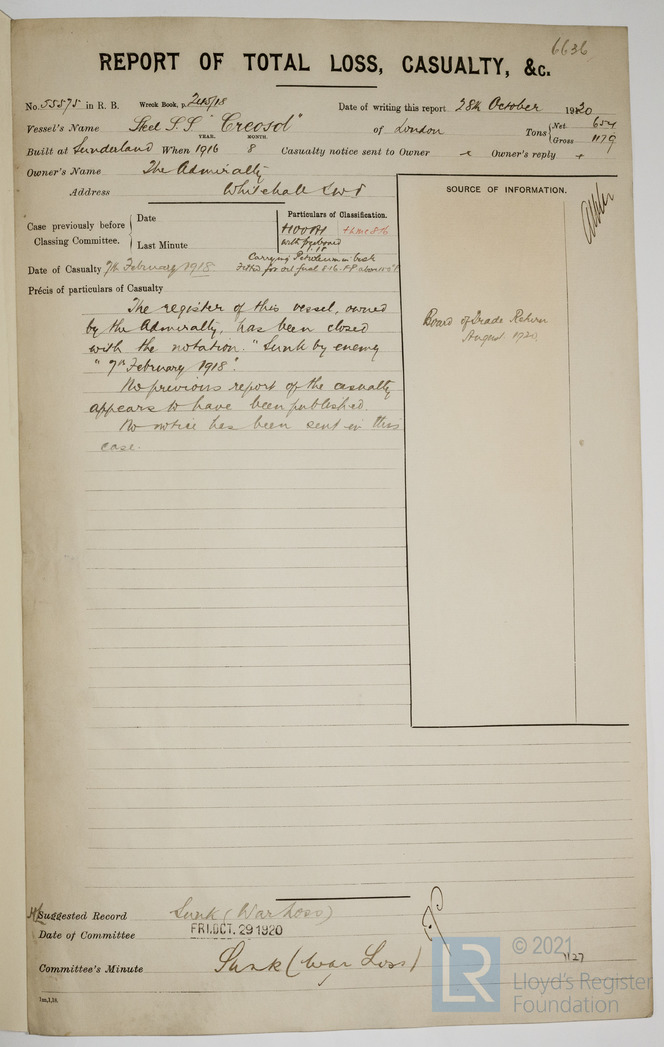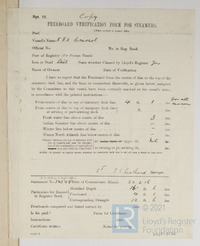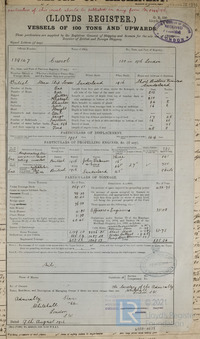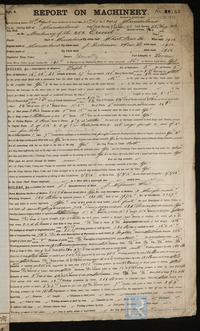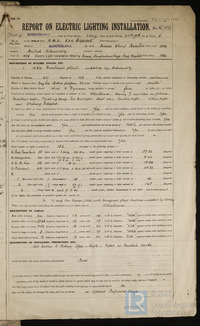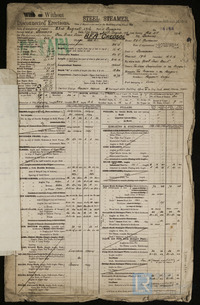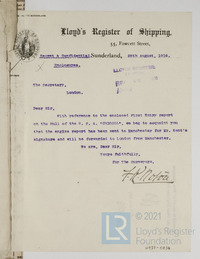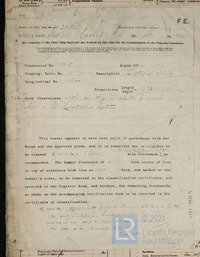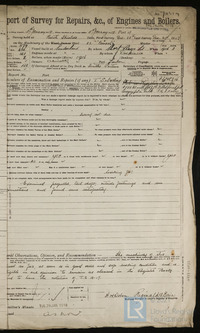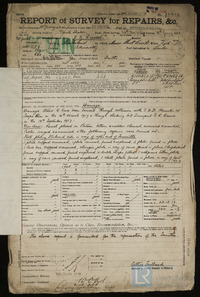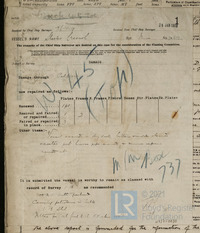- Related documents Related
- Full details Details
- Report document? Report?
Use the data export button to extract customised data sets from the Ship Plan and Survey Report Collection. Available in TSV and CSV formats.
Date recorded as the time of writing.
28/10/1920
The year in which a vessel’s construction is completed.
1916
The individual and/or organisation listed as having been responsible for constructing the vessel. This can/may be the same as the owner and/or manager.
Short Bros Ltd
The port or place in which the vessel’s construction took place, at the time of writing.
Sunderland
A unique number allocated to a specific vessel by an official registration authority of the country of registry (flag) that the vessel belongs to (post. 1855).
139147
Official administrative title (often printed) of a record used by Lloyd’s Register or external organisations.
Report of Total Loss, Casualty, &c./ Wreck reports
The individual and/or organisation listed
Admiralty
Broad categories and subdivisions of vessels related to their purpose or function.
undefined
Is the steamer assisted by sail?
No
A ship’s total internal capacity of a ship measured in register tons from the top of the floors to the tonnage deck.
870
Type and configuration of the engine(s) supplied for a vessel.
Triple Expansion, 3 cylinders
J Dickinson & Sons Ltd
Is machinery fitted at the aft of the vessel?
No
Generally a smaller additional auxiliary boiler (often used while the vessel is at port).
No
Name of the Proving House responsible for the public testing and certification of a vessel’s anchors and/or chain cables.
No
The official record pronounced by the Committee
War Loss
Recorded date for the vessel’s loss or disposal.
07/02/1918
Also referred to as extreme breadth. The distance from the extreme starboard side to the extreme port side.
34.8
Physical extent of a record.
1
Name of ship as recorded on the record
Creosol
The process of transferring a vessel to water, but not necessarily her completion.
16/02/1916
Unique identifier for a given ship, it is assigned by a builder.
405
The country in which the vessel’s construction took place, at the time of writing.
United Kingdom
Unique internal numbers used for identifying, referring and retrieving a specific survey report.
6636
Records that constitute Lloyd’s Register’s first official encounters with a specific vessel, e.g. a survey report.
N
Classification symbol assigned to a vessel by Lloyd’s Register’s Classing Committee denoting the quality of construction and maintenance.
+100a1 with freeboard 1.18; carrying petroleum in bulk, fitted for oil fuel 8.16 FP above 150f; in red +LMC 8.16
A vessel’s means of propulsion.
Steam
A ship’s total internal volume in ‘register tons’ (replaced by gross tonnage post 1982).
1179
Tonnage derived by deducting from the gross register tonnage the capacity that in unavailable for cargo, e.g. machinery space, fuel, crew accommodation etc.
654
Location of construction for a vessel’s engines.
Sunderland
Confirmation as to whether the vessel was equipped with refrigeration machinery to aid in the transport of frozen or chilled cargo/goods.
No
Does the vessel possess an auxiliary power source?
No
Is electric lighting fitted to the vessel?
No
Used to indicate the capability of early reciprocating steam engines, based on dimensions rather than performance. It is not a true indication of actual engine power.
141
Contextual information related to the reasons of the vessel’s loss or disposal.
The register of this vessel was closed with the notation
Prescribed by flag/registration authorities, and usually excludes a small part of the stern. It is measured from the foreside of the stern at the extreme top to the afterside of the stern post.
210
Measurement from the underside of the upper deck on the centre line to the upper side of the bottom plating.
16.6
Report an issue with this document
Have you noticed missing or incorrect data or images for this document?
Please let us know and we will rectify the issue as soon as possible.

